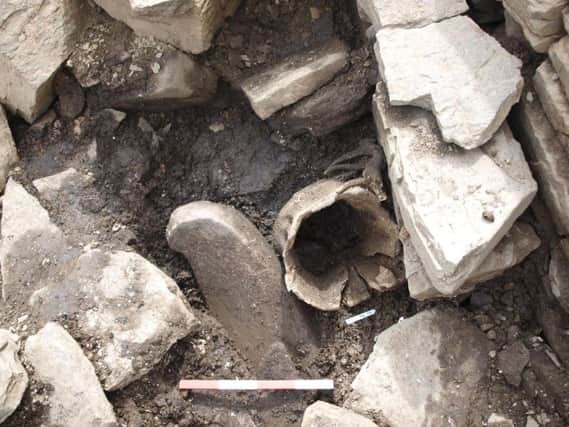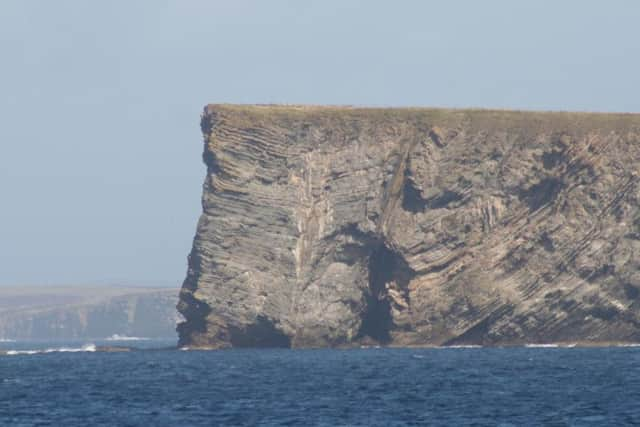Weird whalebone vessel holds secrets of ancient Orkney roundhouse


Analysis of a number of artefacts found at The Cairns broch on South Ronaldsay found that some were made form the bones of a fin whale, the second largest species on the planet after the Blue Whale that can grow up to 27 metres long.
Islanders carved the 'very large' vertebra of a fin whale into a vessel or container in which a human jawbone and two neonatal lambs were placed, it is now known.
Advertisement
Hide AdAdvertisement
Hide AdMr Carruthers, site director of the excavation at The Cairns, said the whalebone vessel had been placed just outside the broch wall, very close to the entrance, when the the roundhouse was put out of use around the Mid-2nd Century AD.


"All this treatment appears to have been part of the measures employed to perform an act of closure of the broch.”
Other artefacts at the broch site were fashioned from the bones of humpback and sperm whales, painting a picture of how a community reacted to such animals arriving on their shores.
The research obtained genetic information in order to find what types of whalebone, or cetacean, were actually present at the sites.
The research is part of a larger project which is investigating the use of whale bone in Western Atlantic society over the last 1000 years.
The Cairns broch is a massive monumental roundhouse of towering proportions which exerted huge influence over the landscape of the Windwick Bay, and the valley running off of it, for centuries, Mr Carruthers, who leads the MSc in Archaeological Practice at UHI.
He said it could be the case a 'particular concentration' of whalebone was found beyond the vessel within the broch structure.
Mr Carruthers it will be "very interesting to see" what further research reveals about the use of whalebone within the Iron Age structure.
Advertisement
Hide AdAdvertisement
Hide AdHe added: "Interesting and intriguingly fin whales are also amongst the fastest whales in the sea, capable of bursts of 45KMH when hunting, or threatened, and they can dive fast and very deeply.
"Indeed, in the modern era, the fin whale was only really hunted in large numbers once the explosive harpoon was invented, and so it is unlikely to have been hunted in the Iron Age, but rather a stranded individual.
That does not mean that other types of whale were not hunted, and the question of whether some whales were pro-actively sourced during the Iron Age remains unanswered. In time, further study of patterns of whalebone and species recognition from sites like The Cairns may shed light on this."